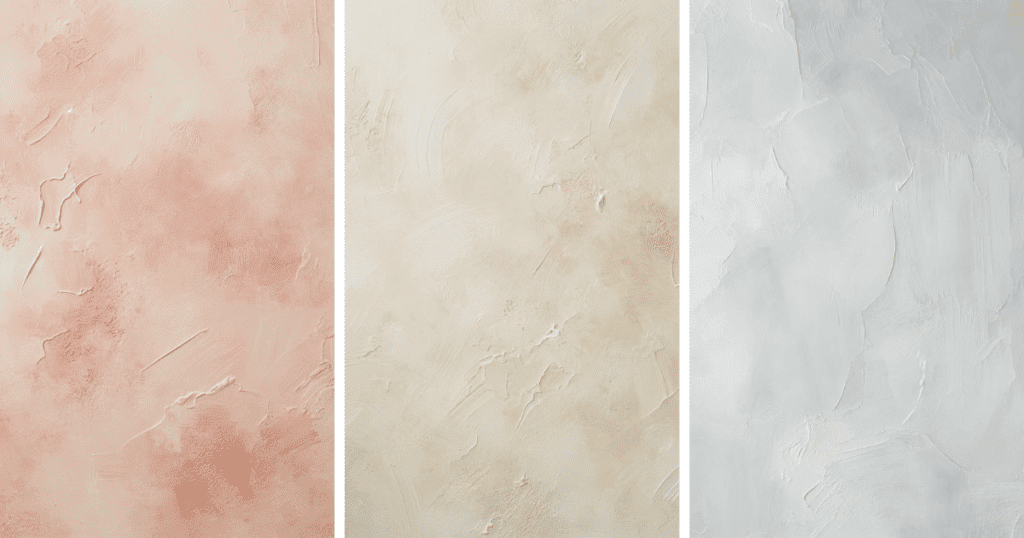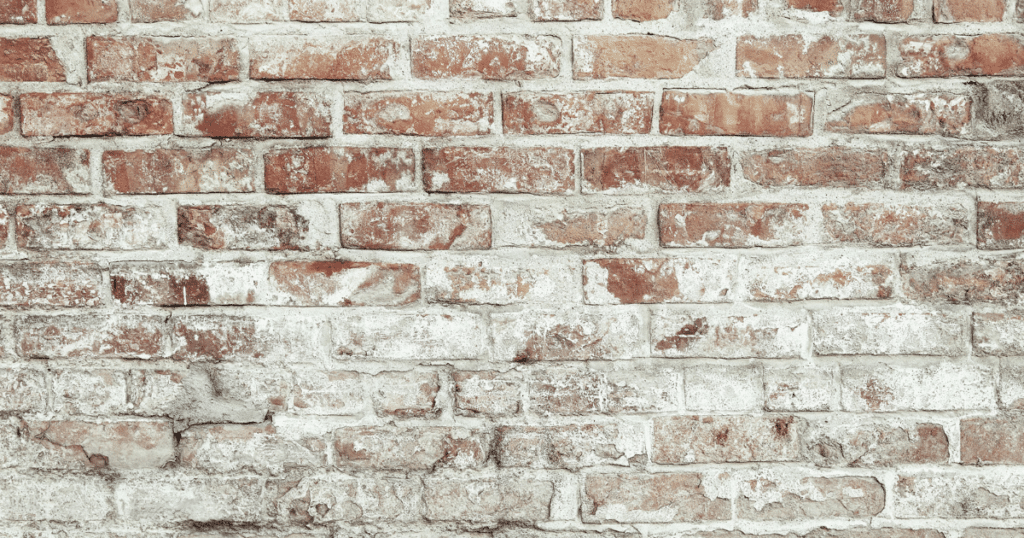Limewash paint has captivated the design world with its soft, textured finish and remarkable depth that infuses spaces with historical charm and character. This ancient technique, which originated in Roman times, is revered not only for its aesthetic appeal but also for its natural composition. Made from water-mixed limestone, limewash is a sustainable choice that enhances both interior and exterior walls with a unique patina that evolves beautifully over time.
In today’s design practices, limewash is making a significant comeback, appealing to those who value eco-friendly and health-conscious building materials. Its ability to create a breathable, mold-resistant finish makes it ideal for a wide range of architectural styles and is increasingly chosen by homeowners looking to combine sustainability with elegance. Whether restoring an old building or designing a new space, limewash offers a blend of old-world flair and modern sophistication.
In this blog, we’ve delved into the essential aspects that make limewash a standout choice for enhancing the aesthetics, atmosphere, and resilience of your wall finishes.
Definition of Limewash and Its Basic Components
Limewash is a type of paint made from limestone that has been crushed, burned, and mixed with water to create lime putty. This putty is thinned with water and often colored with natural pigments to produce paint that can be applied to interior and exterior walls. The key component, lime, undergoes a process of carbonation, reacting with carbon dioxide in the air to form calcium carbonate, which gives limewash its durable properties.
Limewash vs. Venetian Plaster
While limewash and Venetian plaster are both lime-based, their application and final appearance differ significantly. Venetian plaster is much thicker and is applied using a trowel to achieve a smooth, polished finish that can look almost like marble. In contrast, limewash is more fluid and is typically applied with a brush, resulting in a textured, breathable coat that enhances the natural features of the underlying material.
Venetian plaster is ideal for creating a luxurious, high-sheen look on interior walls and ceilings. It’s perfect for spaces where elegance and grandeur are desired. On the other hand, limewash offers a rustic, earthy aesthetic that works beautifully in settings where a soft, matte and historically resonant finish is preferred. Its ability to “breathe” makes it exceptionally suitable for older buildings where moisture transfer is necessary to prevent structural decay.
Both techniques highlight the versatility of lime as a base material, but the choice between them depends on the desired visual outcome and the functional needs of the space.

The Benefits of Limewash
Environmental Benefits
Limewash stands out for its exceptional eco-friendly properties, meeting the increasing demand for sustainable building materials. Comprised purely of natural lime, water, and colored with natural pigments, limewash is inherently non-toxic and free from volatile organic compounds (VOCs). This ensures that it does not compromise indoor air quality with harmful emissions, unlike many conventional paints.
Its durability is a major environmental advantage; limewash finishes are incredibly long-lasting, requiring minimal maintenance and rarely needing reapplication. This longevity makes limewash an environmentally sensible choice, reducing the frequency of repaints and the associated environmental impact.
Practical Advantages
The practical benefits of limewash extend beyond its environmental friendliness. Its high pH level naturally repels fungi and bacteria, making it mold-resistant—an excellent choice for bathrooms, kitchens, and other moisture-prone areas.
Moreover, limewash is an effective natural deterrent against common household pests like mosquitoes and beetles, thanks to its active ingredient, calcium hydroxide. This makes it particularly valuable in preventing bug infestations in areas where wood is commonly used.
Limewash is also hypoallergenic, making it a suitable option for homes and facilities that cater to individuals with sensitivities to chemicals and allergens. Its porous nature also allows it to absorb odors, contributing to fresher indoor environments.
Aesthetic Qualities
Limewash brings a unique matte texture and depth to walls that is difficult to replicate with other finishes. It interacts with the natural texture of the underlying surface to produce subtle variations in color and texture, which evolve over time. This quality gives each limewashed wall a unique character that can range from rustic to sophisticated, depending on the application technique used.
Limewash Application Techniques
Preparing the Surface
Proper preparation is crucial for achieving the best results with limewash. We recommend using an acrylic-based primer, especially when working with non-porous surfaces or surfaces previously treated with different types of paint. This type of primer ensures that the limewash adheres properly and lasts longer, maintaining its beautiful finish.
Application Methods
The method of application can greatly affect the texture and final look of limewash. Our artisans typically employ a variety of brush techniques to achieve different effects:
- Vertical Strokes: Applying limewash in vertical strokes creates a consistent, uniform look that aligns with the vertical elements of the space, such as doors and windows, enhancing the architectural features.
- Cloud-like Patterns: For a more artistic, bespoke finish, limewash can be applied in loose, cloud-like patterns. This technique involves layering the paint in a more abstract manner, which can be ideal for feature walls or smaller accent areas.
Professional Application
While DIY applications are possible, the unique characteristics of limewash often require a skilled hand to fully realize its potential. Professional painters, such as those at A.G. Williams, are experienced in the nuances of limewash from preparation to final touches.
We understand how factors like the natural light in a room and the surface texture under the limewash can influence the final appearance. Our expertise ensures that the limewash not only enhances the beauty of your home or business but also performs optimally in durability and maintenance.

Ideal Areas for Limewash in Your Home
Living Rooms
Limewash is perfect for adding warmth and texture to large, open living spaces. Its matte, textured finish can soften the expanse of walls in vast rooms, making them feel more inviting. The natural variability in the limewash creates a subtle, visual interest that complements both contemporary and traditional decor, adding a layer of depth that paints simply cannot replicate.
Bedrooms
In bedrooms, the calming qualities of limewash can transform the space into a serene retreat. The soft, matte texture of limewash helps to create a cocoon-like atmosphere that is conducive to relaxation and rest. Its ability to absorb both sound and light contributes to a quieter, more subdued environment, ideal for a good night’s sleep.
Bathrooms
Limewash in bathrooms can enhance these typically smaller spaces with dramatic effects. The natural mold and mildew resistance of limewash makes it particularly suited for the humid conditions often found in bathrooms. Its texture and depth can turn ordinary walls into standout features, adding personality and flair to both powder rooms and full baths.
Kitchens
In kitchens, limewash not only complements the design aesthetics but also offers functional benefits. Its ability to neutralize odors and contribute to a healthier indoor environment is especially valuable in a space where cleanliness is paramount. The natural finish works beautifully with a variety of kitchen styles, from rustic farmhouse to sleek modern, enhancing the overall ambiance.
Tips on Maintaining Limewashed Walls
Maintaining limewashed walls is straightforward. Regular dusting with a soft, dry cloth can prevent buildup on the textured surface. For spots or smudges, a damp cloth can be used. It’s important to avoid harsh cleaners, as they can strip the limewash of its natural pigments and protective properties.

Discussion on the Natural Aging Process
One of the most appealing aspects of limewash is its natural aging process, which can enhance the character of the walls over time. As the limewash ages, it develops a patina that can reveal new tones and textures, adding to the aesthetic appeal. This evolving look is considered a desirable feature, embodying the charm of natural materials that age gracefully.
Why Choose A.G. Williams for Your Limewash Project?
Limewash is more than just a paint; it’s a testament to the beauty and sustainability of natural materials. With its unique matte finish, depth of color, and textural nuances, limewash offers a distinctive aesthetic that cannot be replicated by conventional paints. The environmental benefits—being highly durable, non-toxic, eco-friendly, and VOC-free—alongside its practical attributes like mold resistance and odor absorption, make it an ideal choice for those who are health-conscious and environmentally aware.
At A.G. Williams Painting Company, we bring over a century of painting expertise to each project, backed by our deep knowledge of both time-honored techniques and modern trends. Our skilled professionals are adept at applying high-quality limewash in a way that honors the material’s rich heritage while fulfilling contemporary design expectations.
If you’re considering limewash for your next renovation project, or simply want more information on how this beautiful finish can transform your space, we invite you to reach out to us. Let A.G. Williams help you achieve the perfect balance of style and functionality with a finish that stands the test of time. Contact us today to begin your journey toward a more beautiful and sustainable home.